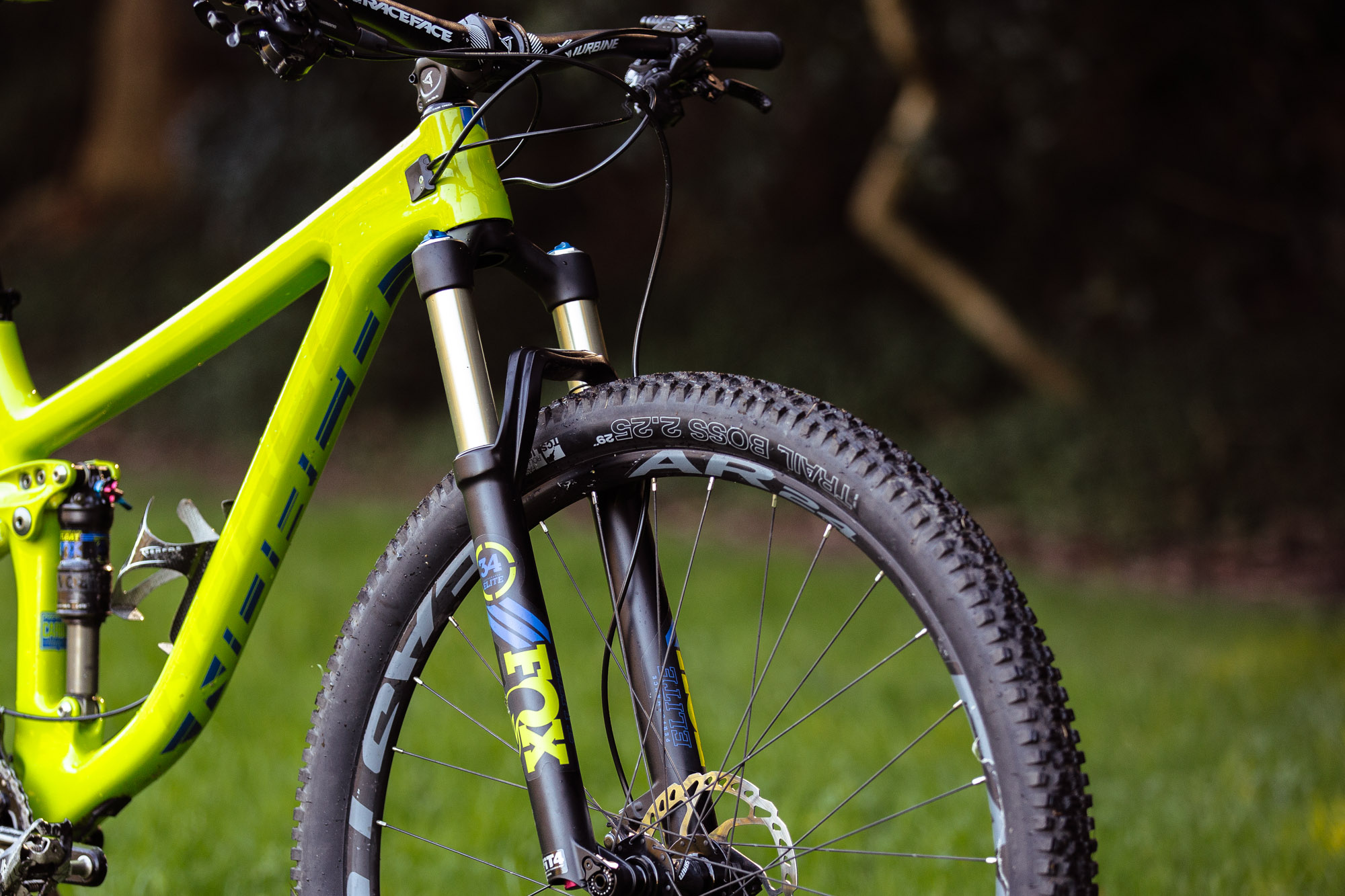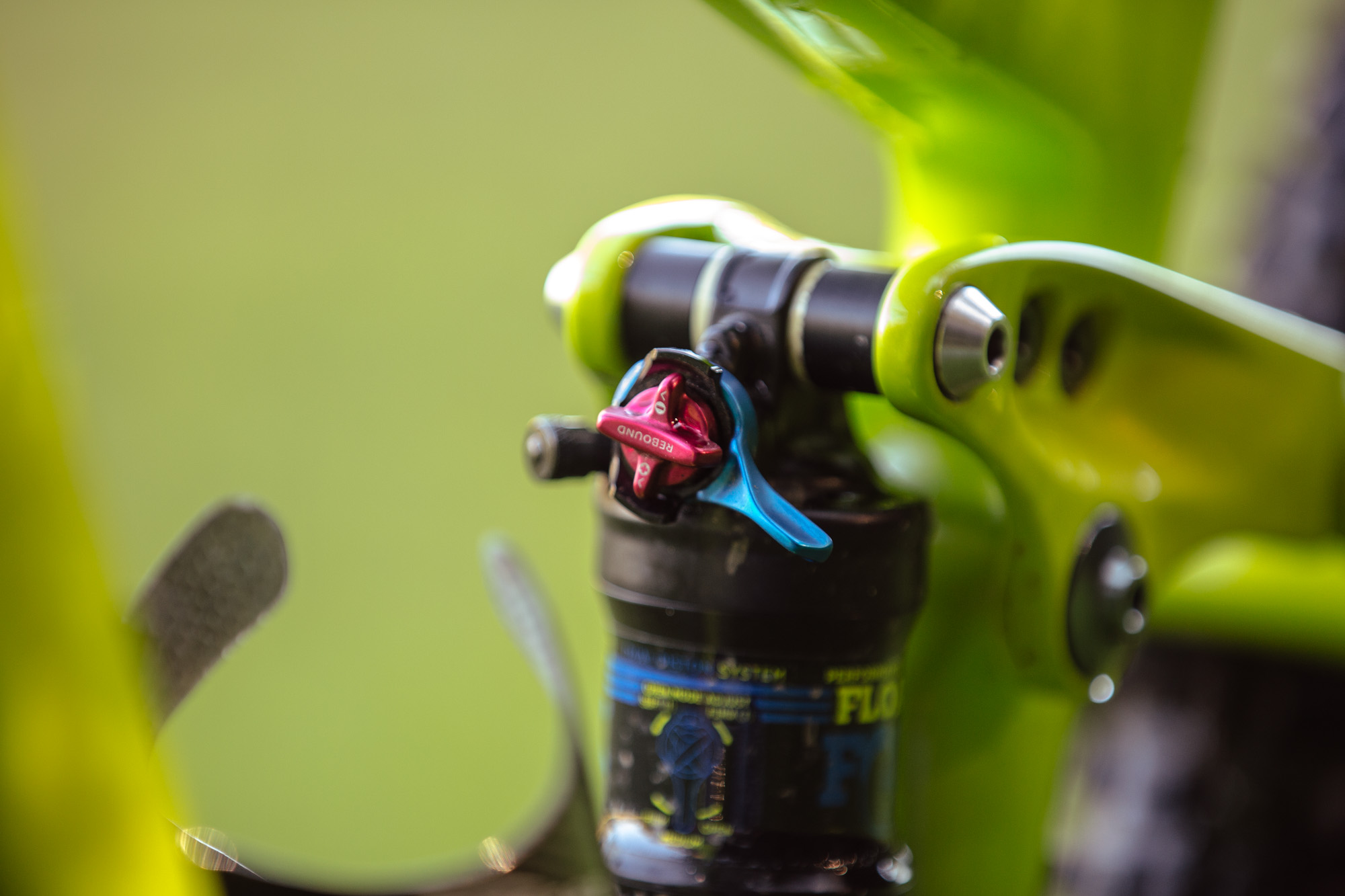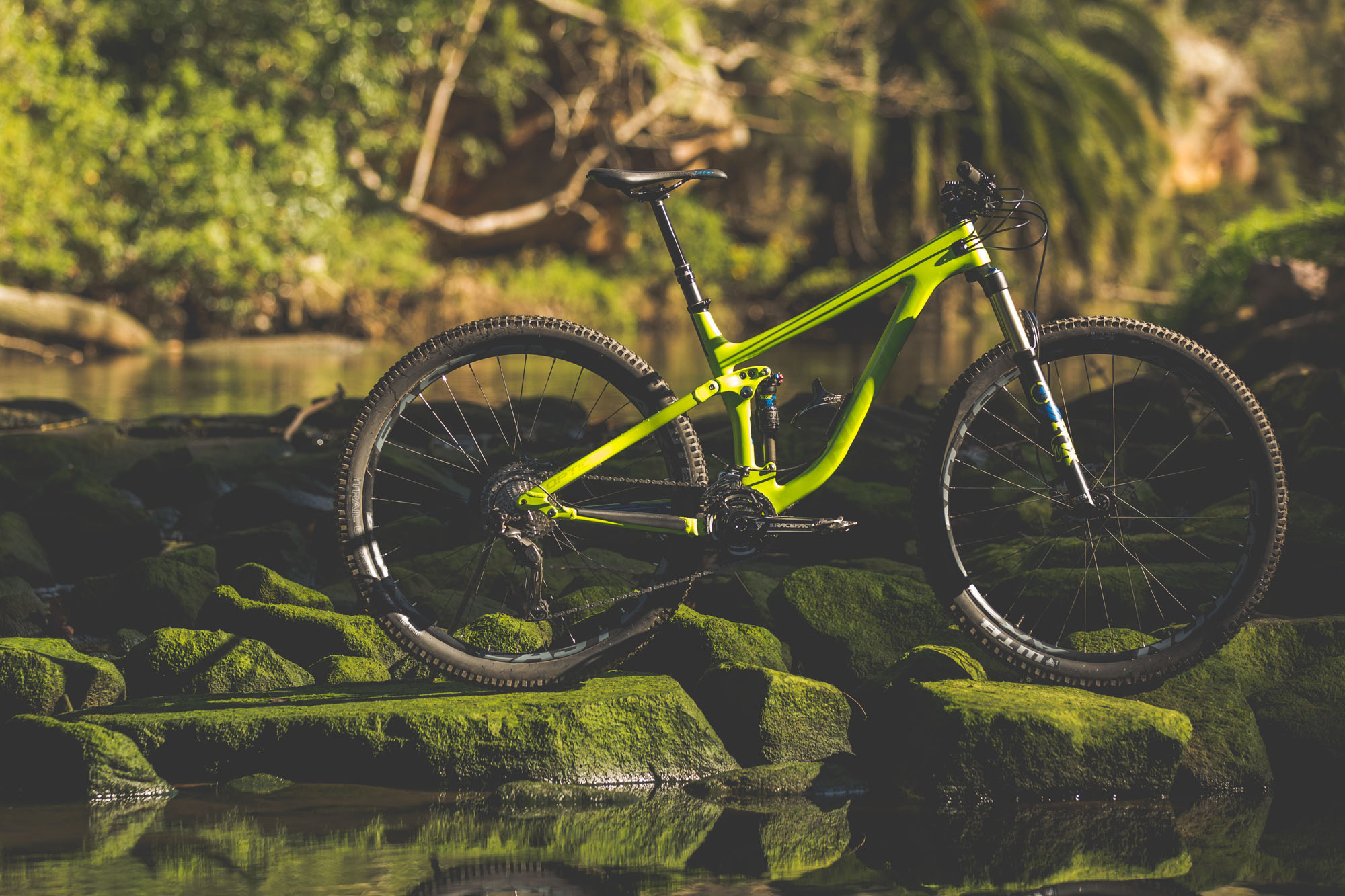The Optic series is an important project from Norco – a new trail bike, filling a vital hole in their range, and available in two wheel sizes. This in itself is not remarkable, there are many brands that offer popular trail bike models in both 27.5 and 29er formats (for example, the Trek Fuel EX or Specialized Camber). But what makes the Optic unique is Norco’s commitment to making the handling of both wheel size options as close to identical as possible. You can read all the details about how Norco achieved this in our in-depth piece here, or our interview with the bike’s designer, Owen Pemberton. The notion of having the benefits of a 29″ wheel and still retaining the playful handling of a 27.5″ bike had us intrigued, so when presented with the choice of review bikes, we opted for the 29er.
The build:
There’s nothing immediately apparent about the Optic C9.2 that gives you insight into the bike’s complex development. It looks, for all intents and purposes, like a Norco Sight with a smaller shock – carbon up front, alloy out back, unremarkable really. But the devil is in the detail here, and it’s the clever mix of geometry numbers that make this bike sing.

For many people, 29″ wheels means cross-country, wheels on the ground, fast but dull. The Optic 29 is out to overturn this notion. In general, long chain stays make a bike harder to hop, manual, jump or carve round a tight turn, so the Optic’s short 430mm stays are a big step in the right direction. Like most Norco dual suspension bikes, the frame employs Gravity Tune, so the length of the rear centre changes with the frame size. An Optic 29 in a size small has stays of 425mm, which is tiny. These kinds of short lengths are possible thanks to the use of Boost rear hub spacing, which affords an extra 3mm of chain line, allowing Norco to squeeze the rear wheel in close but still maintain gobs of space for big rubber and a front derailleur. All these machinations make the Optic super easy to get onto its rear wheel. It sure doesn’t manual like your average 29er cross country bike!

Up front, the bike gets a generous reach, putting plenty of room between you and the front axle. Norco have avoided the usual 29er trend of running a steep hand angle – at 68.5 degrees its only half a degree steeper than the 27.5″ bike – and the bike is equipped with a 50mm stem. All those numbers tell you this bike is built for ripping. They’re fun figures, and thankfully they translate perfectly from the spreadsheet to the trails.


Popping geometry to one side, the Optic displays all of those things that Norco have been doing so well in recent years, with clean cable routing, solid suspension hardware and good access for a water bottle. If we’re nitpicking, we do think the rear brake hose clamps are a bit cheap looking, and the cross bolted linkage seems out of step with the smooth finish of the carbon front end. Given the bike’s price tag, those two elements seem a bit half baked.
A removable front derailleur mount is bolted to the ISCG tabs, which means that if you opt to run a single-ring drivetrain, you can get rid of all traces of the front derailleur entirely. It’s a neat solution that preserves the clean lines of the frame.

Suspension:
The Optic presents an interesting conundrum: the geometry makes you want to push the bike hard, but the suspension travel is only limited, with 110mm out back. To balance out these competing forces Norco have given the Optic a a very progressive suspension rate, so you’ve got to give it a real hiding to get to the bottom of the travel. We’re sure some people will wish it were a little more linear, but we like it – you can really open up it up on the descents without bottoming out. Up front, you’ve got a little more travel, 120mm. The FOX 34 Float is one of the new Boost equipped models too, with 110mm dropout spacing, and the extra wide stance of the fork legs looks so burly.

When it comes to the way the suspension operates, there’s a lot of emphasis placed on making the travel work for you, in all situations. While many short travel bikes are all about super-efficient power delivery, the Optic is all about traction. There’s very little anti-squat in the suspension configuration, so it doesn’t exactly rocket forward in the same way as say the Pivot Mach 429 or Specialized Camber. On the flipside, the suspension isn’t impeded by chain tension, which is most noticeable when you’re climbing in a low gear – you’ve got excellent grip and you don’t feel any tugging of the chain through your pedals.
The fork’s tune is well matched with the rear end. Most 120mm forks from FOX come with a firmer tune, but Norco had FOX give the Optic’s fork a lighter, more supple compression tune to match the rear end.
Components:
With the exception of the wheels and tyres, which we found sub-par, the Optic is robustly fitted out with an eclectic mix of components from Shimano, FOX, RockShox, Raceface and SRAM. We wouldn’t call it stellar value, but none of the components are the kind of items you’d turn you nose up at.

Shimano XT 2×11 or 1×11 drivetrain: The Optic C9.2 and C7.2 are the only models in the Optic range which come with a double-ring drivetrain. While our early release bike didn’t come with one, production bikes will also ship with a Raceface narrow-wide chainring in the box too, so you can simply whip the derailleur, shifter and rings off, and pop the single ring on without spending another cent. It’s cool that Norco are covering both bases, and keeping the single and double ring fans happy. As usual, the XT shifting is superb.

35mm cockpit: If big is good, bigger is better. That’s the thinking behind the immensely stiff Raceface 35mm-diameter bar/stem, and it does look very tough. The 50mm stem and 760mm wide bar feel Of course if you’re hoping to swap bars or stems, then your options are limited, as the 35mm-diameter standard is far from common.

Tubeless woes: The Optic C9.2’s wheelset is a bit disappointing. Firstly, the Easton rims aren’t pre-taped for tubeless, which seems silly on a bike of this caliber as everyone is going to want to go tubeless. Even once we’d taped the rims, we found the seal between the tyre and rim was fairly poor and we experienced air loss over the course of a ride from both seepage and burping until we swapped the tyres.

Fast, but skatey tyres: Schwalbe’s Racing Ralph / Nobby Nic combo is a fast set of tyres, but we didn’t like the firm Pace Star compound and we didn’t find them terribly supportive. Given this bike’s desire to shred corners, we’d have much preferred a tyre with a softer compound and stiffer sidewalls. In the end, we decided to swap out the tyres for something more solid and grippier (WTB Trail Boss in a 2.25″) to let us really ride the bike how it’s intended to be ridden. We don’t often swap tyres for testing, but we just didn’t feel we could really get the most out of the bike with the stock tyres.
Ride:
If you just haven’t clicked with 29ers in the past, you really need to throw a leg over the Optic. The notion that 29ers are awkward, ground-bound mile-eaters is blown away by this bike.

Cornering: Once we’d fitted some sturdier rubber, we really got to discover what the Optic is all about, and the twisty stuff is one area in which this bike really comes alive. It dives into corners with plenty of commitment, the stiff fork will hold a line like crazy, and with the 760mm bar you never feel like the front wheel is going to be yanked out from under you. Thanks to the tight rear end, you can really pull out of a corner off your rear wheel, which is not how many 29ers like to be ridden. Once we’d gone tubeless and lowered the pressures a bit, there was a stacks of grip available in flat turns, with the supple suspension working overtime. It’s hard to beat a 29″ wheel for grip, that’s for sure.

Climbing: If you’re coming at the Optic from a purely cross-country background, you might feel a bit underwhelmed by the Optic’s steady, patient climbing style. As we’ve noted above, the suspension is more about grip than sheer acceleration, and the riding position is very ‘trail-ey’, so it’s not an aggressive climber. On the flipside, you’ve got excellent traction and you can continue pedalling smoothly up some pretty loose and ugly climbs without the rear wheel spinning. The short stays make it easy to pop the front wheel up over ledges or keep the front wheel up when laying the power down over roots or stepped climbs too, so it’s an awesome ascender when there are these kind of obstacles to deal with. For the most part, we left the shock in its open setting too, preferring to make the most of the grip available.

Descending: While the Optic’s 110/120mm of travel isn’t a lot, it’s all about quality, not quantity. The balanced front and rear suspension never seems to clatter through its travel, keeping up in the mid-stroke nicely so there’s always a bit in reserve for when you wallop it into an unexpected hole. Bigger wheels carry speed over the small and mid-sized bumps better than a 27.5″ will too, which gives the illusion of having more travel than you’ve actually got on hand, which in turn feeds back into encouraging you to tackle things faster and harder. It’s a vicious loop of awesomeness.
Overall:
Get some grippy rubber onto this bike ASAP and discover how much fun a 29er can be when it’s done well. The Optic lives up to its promise of delivering a ride that’s just as fun and lively as a 27.5″ bike, but also giving you the grip and roll-over benefits of a 29″ wheel. While we’re sure plenty of people will still opt for the 27.5″ version of this bike with its slightly longer travel, we’re struggling to find many reasons why we’d consider going the smaller wheel instead.
We think this bike can cover a lot of the riding spectrum too. Sure, it’s never going to be a cross-country or Enduro race bike, but for everything in between it’s got the situation well in hand. Trail riding should be about having fun, and if you can’t have fun on this bike, then get to a doctor because you’re probably dead.




